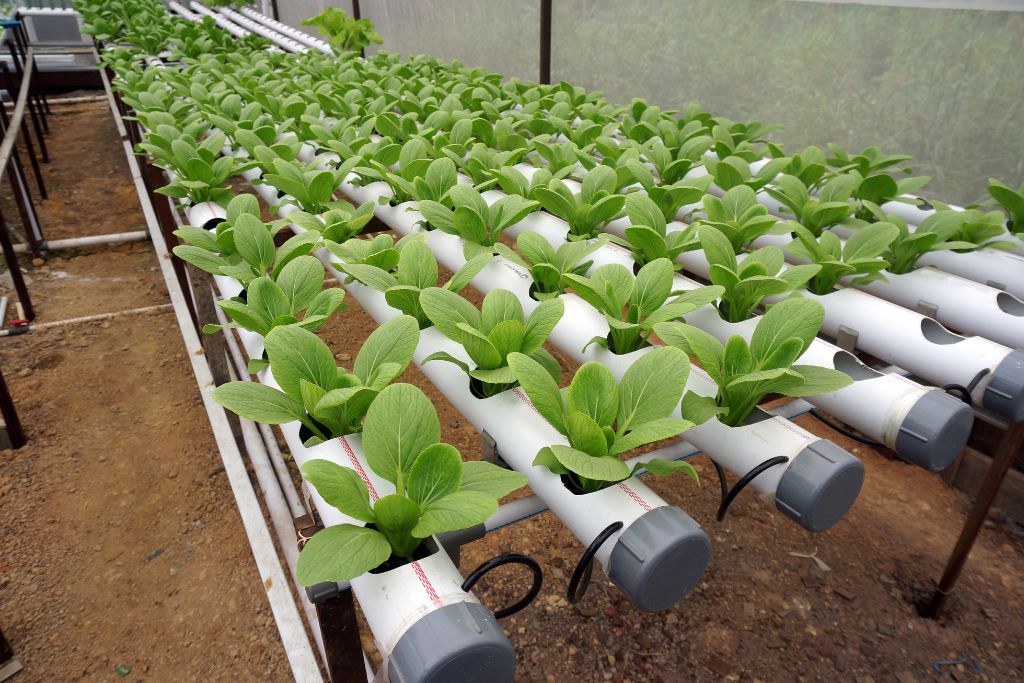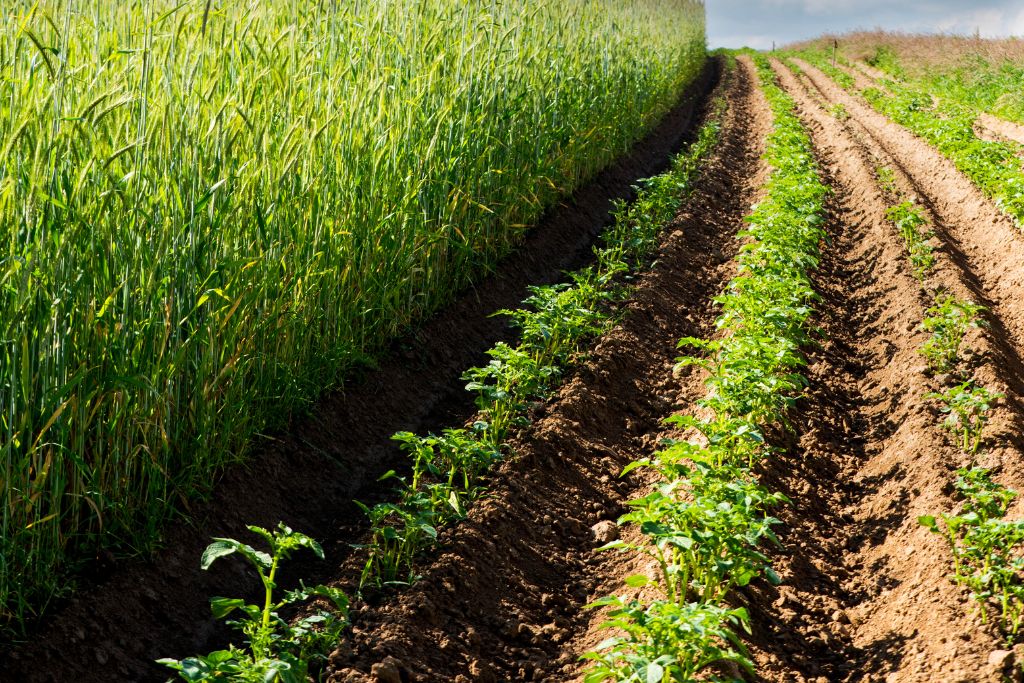Our current methods of industrial food production are wreaking environmental havoc while failing to provide the agricultural yields necessary to sustain the growing global population. The complexity of the issue demands a variety of responses. This article explores the future of farming by analysing various ways in which we can improve the sustainability of traditional farming and also in what way new, cutting-edge technologies can offer us the solution we desperately need to feed our world without destroying it.
—
The Future of Farming
According to the Food and Agriculture Organisation (FAO), a quarter of the global population “suffer from moderate or severe food insecurity”. If, as projections suggest, the world’s population reaches 10 billion by 2050, the question of how to feed the world will only grow in severity. Coupled with this situation is the fact that industrial farming is taking a huge environmental toll while failing to meet global food demand.
In his new book ‘Regenesis’, George Monbiot describes farming as the “world’s greatest cause of environmental destruction”, adding that farmland sprawls across 30 times more land than urban areas. The issues posed by the rampant use of fertilisers, pesticides and herbicides, along with the depletion of aquifer water sources, overgrazing and loss of topsoil have been widely analysed and clearly lead to the conclusion that farming practices must change.
The nature and direction of these changes, however, are complex. In ‘The Politics of Green Transformations’, for instance, authors Ian Scoones, Melissa Leach, and Peter Newell caution that there is much at stake in the debate over what drives unsustainability. They emphasise the importance of asking, “who is to blame for what and how can we rebalance our existence in alignment with planetary boundaries?”
With this in mind, we must recognise that the notion of a single, “silver bullet” solution to address the issues created by industrial farming is a pipedream. As Scoones, Leach and Newall explain, a variety of pathways to sustainability, from technology-led and marketized to state-led or citizen-led, are available, and which one is most appropriate is largely contextual.
Technocentric pathways, from vertical farming to lab-grown meat, for instance, have been extolled as the “future of farming”. However, such technologies are not yet viable globally.
We must therefore embrace a mixed approach to agriculture, supporting the development of paradigm-shifting technologies while not forgetting the crucial benefits of low-tech, traditional and community-based farming practices.
You might also like: Can Traditional Farming Withstand Another Summer of Record-Breaking Heatwaves?
3 Examples of What the Future of Farming Looks Like
With the advent of ‘soilless’ farming (such as hydroponics and aeroponics) in the late 20th century, the seeds were sown for an agricultural revolution that decoupled production from the soil at scale. As we shall explore, numerous companies, organisations, and technologies have subsequently been developed which seek to boost yields while reducing their environmental impact.
1. Vertical Farming
The broad range of benefits derived from vertical farming has been well-documented, so we shall instead turn first to the specifics of Fischer Farms, a UK-based vertical farming company. Focussing primarily on leafy greens (such as rocket, watercress, chard, basil, dill and parsley), Fischer Farms ensures that the required nutrients are delivered to the plants by use of a water solution (hydroponics). Moreover, the plants are grown in a medium such as rockwool or perlite which takes the use of soil out of the equation.
By carefully controlling the internal conditions of their facilities Fischer Farms are able to entirely remove pesticides, herbicides, or insecticides from production. Simultaneously, stacking their produce on multiple levels allows them to produce more harvests per year than field-grown crops. This means that one Fischer Farms vertical farm can produce in one acre the same amount of food that requires 250 acres of field-grown crops. Such production is essential for the resilience of our food systems as we look towards a future with increasingly severe weather.

You might also like: Top 7 Vertical Farming Companies in 2022
2. Data-Driven Hydroponic Farming
Similarly, AppHarvest, a US-based indoor farming operation, claims to be able to produce 30 times the tomato yield of conventional farms while using 90% less water. This is made possible by the use of 300 strategically placed monitors to measure the internal climate of the greenhouses and deliver precise levels of essential inputs from light to Carbon Dioxide (CO2). In addition, solar panels deliver clean energy to the greenhouses to power the operation. Crucially, by increasing agricultural yields while reducing demands on land, both Fischer Farms and AppHarvest are helping to facilitate a situation where we can continue to return marginal farmland to the wilderness.

You might also like: Pros & Cons of Hydroponic Farming
3. Carbon-Neutral Animal Feed
Taking on a different challenge of the agricultural industry, food chain pioneer Better Origin has developed a system to provide carbon-neutral animal feed as insect protein on-site. This is achieved by turning farm waste into larvae feed which is fed to insect larvae before they in turn become food for hens, pigs, fish, and more.
The benefits of such a system are myriad. First, farm waste is used to its full extent instead of having to be removed or allowed to rot away. This creates a circular system, dramatically reducing inputs and wastage. Second, it removes the need to import foodstuff from elsewhere, thereby reducing the amount of CO2 that has gone into production – Better Origin calculate that their X1 (their flagship biomass converter) can save over 130 tons of CO2 each year. Moreover, it helps reduce demand for conventional feeds such as grain and soy which are grown on a vast and destructive scale. Estimates suggest that about one-third of all grain produced is used to feed livestock.
New Technologies Are What We Need, But It’s Too Early To Fully Rely on Them
However, as effective and inspirational as these technologies are, we must keep in mind that many are still in their early stages and are thus still costly and unfit for large-scale production. Despite their undeniable importance, we will not be able to rely on such companies to replace conventional farming until they are scaled up, thereby securing the operational efficiencies that will significantly reduce costs. This, however, can only happen if governments and the private sector understand the importance of investing in sustainable farming technologies. If these institutions take the lead, it is reasonable to suggest that private funding will follow.
However, until these technologies are able to shoulder more of the burden and eventually replace conventional farming, we must consider how traditional farming can improve its industrial practices.
3 Ways To Increase the Sustainability of Traditional Farming
There are many ways to make traditional farming more environmentally friendly, from pasture-fed beef herds to community-organised urban permaculture.
1. Rewilding and Food Production
Our first case study here is the Knepp Estate in the UK. Towards the end of the last millennium, Charlie Burrell and Isabella Tree recognised that the intensive farming ethic was failing to produce enough yield from their farm to generate the profit to keep it running. They were thus strongarmed by reality into rewilding their 3,500 acres with astonishing results.
As part of the project, a herd of longhorn cattle was introduced as a proxy for the now-extinct auroch. Such was the success of their breeding that soon their numbers had to be controlled, providing premium, organic beef with essentially zero feed or infrastructure costs. But the benefits of the project did not stop there. Chemical analysis of the meat produced from pasture-fed cattle showed far higher levels of vitamins A and E, alongside twice the levels of powerful antioxidants like selenium and beta-carotene. In addition, the newly invigorated ecosystem at Knepp, of which the longhorns were an integral part, began to sequester increasing amounts of CO2 as soil health continued to improve. Coupled with the eradication of feed imports, producing beef in this manner demonstrated that cows did not have to be an enemy of the climate.
2. Pasture-Fed Beef and Regenerative Agriculture
Patrick Holden, the co-founder of UK-based The Sustainable Food Trust (SFT) and US Sustainable Food Alliance, concurs with the findings at Knepp. A long-time advocate of sustainable farming practices, his cattle are rotated between pastures to prevent overgrazing and ensure the soil remains healthy. He is also at pains to point out that ruminants (including cattle) are the only animals that can digest the cellulose in grass and clover and are thus essential in transferring that energy up the trophic levels. When farmed at a smaller scale, in a regenerative manner, cattle can be a major benefit to ecosystems.
This is a theme with which Simon Fairlie, a long-time eco-activist, has identified for decades. Referencing the SFT’s, “Feeding Britain from the Ground Up” report, Fairlie favours halving grain production, encouraging mixed organic farming, growing more pulses, and ensuring waste food and by-products are fed to livestock. Such measures are projected to “increase existing levels of food self-sufficiency, while allowing an extra 2.5 million hectares for tree planting and nature recovery”. Essentially, this is a call for more humane farming practices, major reductions in chemical inputs, and the return to regenerative agriculture.
3. Urban Permaculture
Shifting our focus away from traditional farming, the trend towards community-led urban farming projects has a significant role to play in reducing food miles, engaging people with food production, and tackling the issue of malnutrition in cities where fresh vegetables are few and far between. Taking Detroit as an example, ‘Keep Growing Detroit’, an organisation who promote and support food self-sufficiency in the city, estimate that 1,400 urban gardens and farms have sprung up. Not only do such projects ensure the availability of local fresh produce, but they also provide community ownership of the means of production and thereby transparency to the supply chain which is conspicuously lacking in the production of many industrial farming organisations. What’s more, engaging with the land has proven benefits to mental and physical health. Perhaps most importantly, urban farming and community projects diversify the source of food which is set to become an increasingly important trend as the climate continues to change.

Can We Feed theWorld Without Destroying It?
It is undeniable that modern industrial farming practices have brought environmental destruction across the developing world. Despite the obvious depredations in pursuit of higher yields, we are still falling short of feeding the world. If we are to succeed, we must embrace various solutions, from the top-down, technocentric to the community-led.
You might also like: Why We Should Care About Global Food Security

















